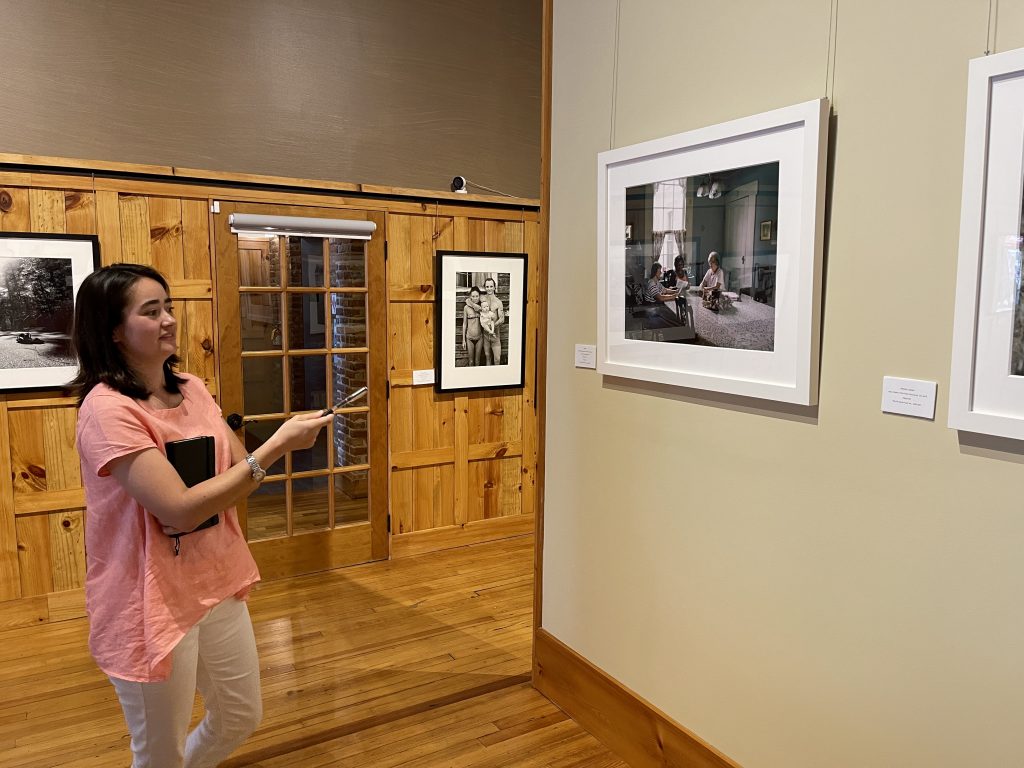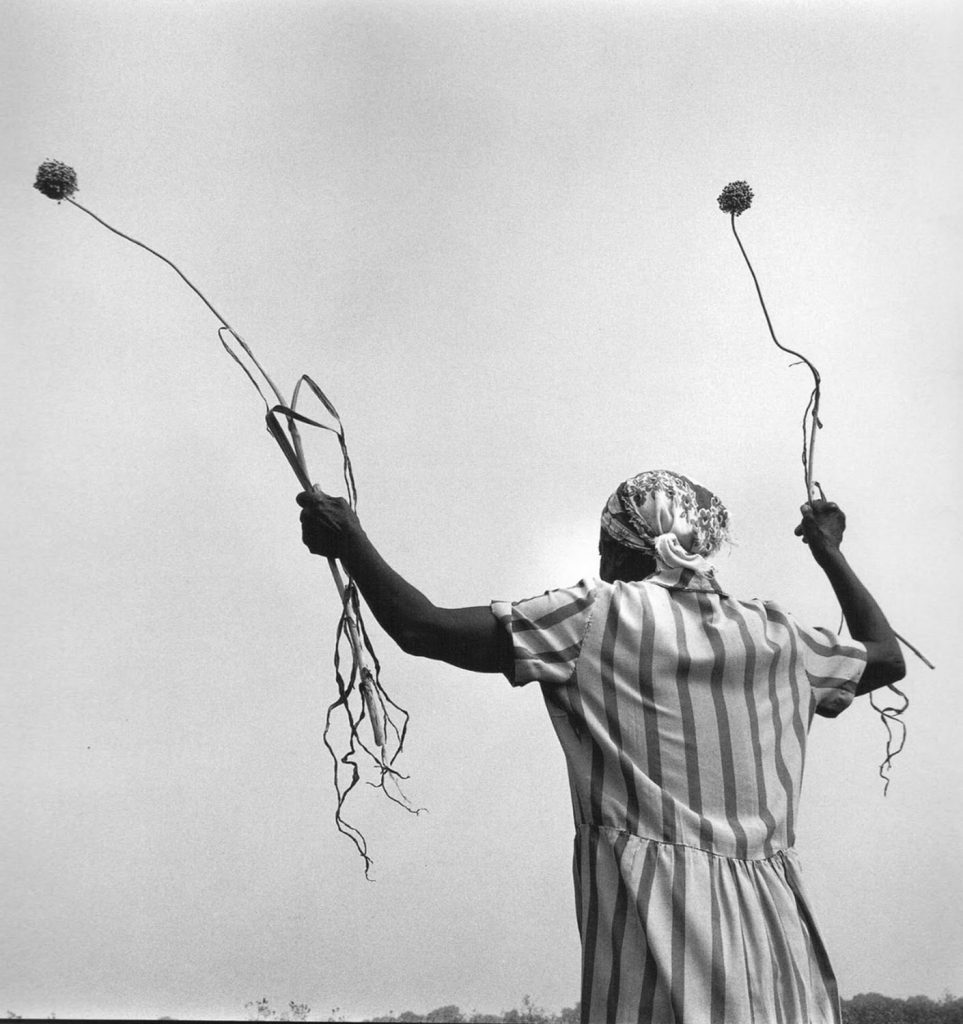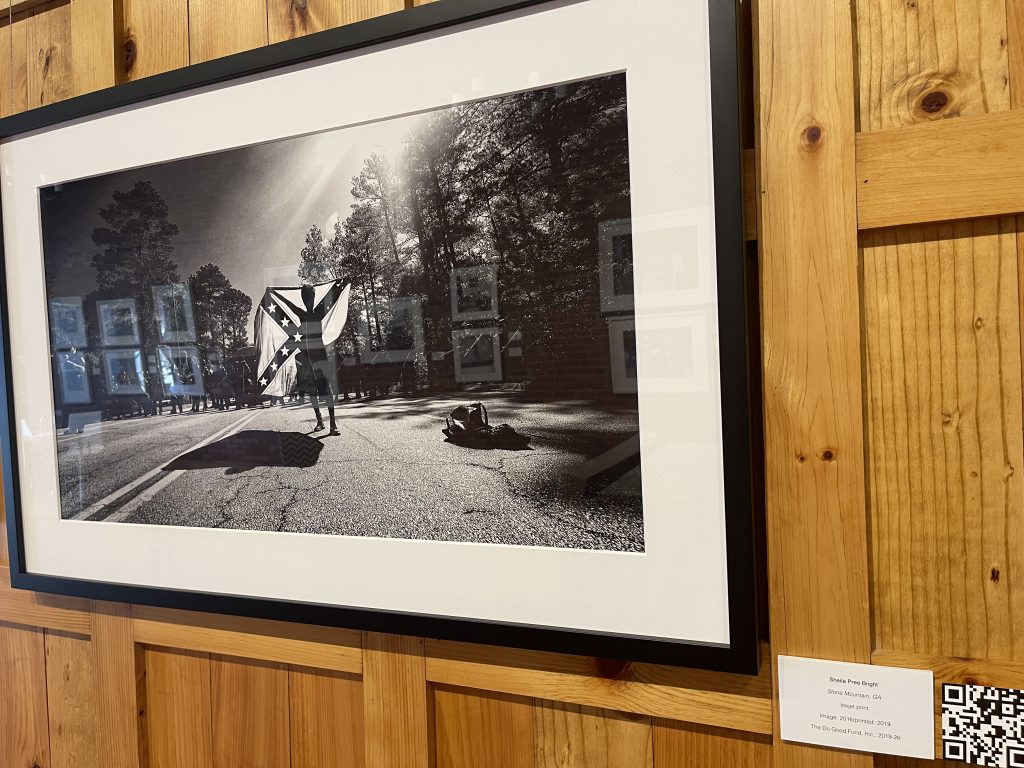
A conversation with Gallery Outreach Coordinator Eliza Daffin. Additional comments by Collection Manager Jessica Hughes.
What distinguishes Southern photography as compared to photography from other places?
“Southern photography is really rooted in history. And the place. Some Southerners have a real pride in where they’re from and who they are.
Even though the history of the South is pretty dicey and kind of rough, I think we have progressed from that history and Southern photographers are proud of who they are and the photos they take based on their place.”

How would you describe the collection here at The Do Good Fund?
“It’s a documentation of Southern photography. Sometimes that documentation isn’t necessarily all beautiful trees or flowers. It’s documentation of the people of the South. And that’s what makes up the culture — the people.
The collection is Southern photography from World War II forward. There are over 600 items.
It’s like a lending library of photography. The works travel around to museums and galleries to be on display. They’re not not for sale, just for people to see.”

Edition: 21/50, Gelatin silver print, The Do Good Fund, Inc., 2013-001.

How does having this gallery space enhance the mission of the Do Good Fund?
“The Do Good Fund is about bringing art to the people. This gallery brings it to the people.
The current exhibition Pictures of Us: Southern Portraits from the Permanent Collection is on view through August 28th. The back gallery, which rotates on a more frequent basis, currently features works from our 2020 Collinsworth Emerging Photographers Acquisition Fund recipients: Rosie Brock, Alex Christopher Williams, and Andrea Morales.”
How did y’all carry out your mission during the quarantine?
JESSICA: “We shifted over to doing virtual salons during that time. It was useful to us to be able to share the collection that way, particularly because we didn’t have gallery space at that time.
Our raison d’etre is to share the collection and get it out there in public. With so many institutions closed, that affected us, too. Being able to have that virtual presence was great for us. Being able to connect with different artists and organizations that way was really useful.
I think a lot of people have realized the benefits of having virtual programming and how useful it can be. We might try and continue that hybrid.”

The Do Good Fund Gallery on 12th Street.
Gallery Hours: Wednesday 1:00 – 5:00pm, Thursday 1:00 – 5:00 pm, Friday 1:00 -5:00 pm , Saturday 10:00 am – 3:00 pm.
What sort of experience do you want people to have when they come here?
“I would like for them to see documentation of the South. An unbiased documentation. Whether it’s through color photography or black-and-white photography or through an artist coming to tell their story about a photo.
The salons are going to start bringing the artists that made these works. So people will be able to have that first-hand experience, with the artist telling them how they made a work and why they made it the way they did. And why they chose to document it the way they did.”
What is the overarching, long-term vision for this collection?
“The goal is to continue to educate people about the South. The history of it. A history that is sometimes good and sometimes bad. And It’s beautiful and sometimes hard to swallow, but it’s there.”
JESSICA: “There’s all kinds of different connection points with this collection, too. A lot of our collection is portraits. So it might be people you know, or people you might want to get to know.
People come to the gallery and gravitate toward specific images because of shared experience. So there’s all kinds of different ways you can be connected to the collection, based on who you are and your relationship to these shared places.”

BONUS CONTENT: Press play to hear Editor Frank Etheridge’s interview with Eliza Daffin and Jessica Hughes 7.19.2021
Education: BFA in Photography, Columbus State University
JESSICA: “I’m an English major from Auburn.
We have a small staff. Alan Rothshild is our founder and president. Eliza is here when the gallery is open. I’m here 2 days a week. The other 3 days I’m at the Jule Collins Smith Museum where I’m a curatorial assistant.”
Favorite all-time photographer: Sally Mann
Black-and-white vs. color: Black and white
Film vs. digital: Film
Is photography best as art form or as documentation: “The art form can be a documentation.”
#1 thing you enjoy most about photography: “The kind of photography I do is large-format film photography. It takes a very long time to take one photo.
Just setting up takes 30 minutes. The long set-up process forces you to be intentional. With an iPhone, you can take a photo real quick and you might not think it out very well. You can take 500 in a second and then just delete the ones that don’t work.
I like to be forced to be intentional. There’s no undo button in large-format film, so if you get it wrong, it’s all on you.”

